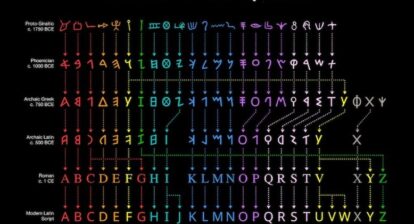The collaborative efforts of archaeologists and computer scientists have yielded an AI program capable of swiftly translating ancient cuneiform tablets. This breakthrough is expected to enhance the accessibility and understanding of Akkadian texts, enabling scholars and students to delve deeper into the history and knowledge preserved within these ancient artifacts.
Archaeologists and computer scientists have joined forces to develop an AI program capable of instantly translating ancient cuneiform tablets using neural machine learning. In a recent publication in the journal PNAS Nexus by Oxford University Press, the researchers have successfully applied the AI program to accurately translate Akkadian texts.
Akkadian, an ancient East Semitic language once spoken in various regions of ancient Mesopotamia, including Akkad, Assyria, Isin, Larsa, Babylonia, and possibly Dilmun, has been preserved on clay tablets dating as far back to 2500 BC. These tablets were inscribed using cuneiform, a script borrowed from the Sumerians, which involved pressing wedge-shaped symbols into wet clay.
The researchers highlight the significance of this development, noting that hundreds of thousands of cuneiform-inscribed clay tablets hold invaluable information about the political, social, economic, and scientific history of ancient Mesopotamia. However, due to their vast number and the limited number of experts capable of deciphering them, most of these documents have largely not been translated.
According to the researchers, “Hundreds of thousands of clay tablets inscribed in the cuneiform script document the political, social, economic, and scientific history of ancient Mesopotamia. Yet, most of these documents remain untranslated and inaccessible due to their sheer number and limited quantity of experts able to read them. This paper presents a state of the art neural machine translation model for the automatic translation of Akkadian texts into English, from Unicode cuneiform glyphs and from transliterations of the cuneiform signs, achieving 36.52 and 37.47 Best Bilingual Evaluation Understudy 4 (BLEU4) scores, respectively. It is particularly effective in maintaining the style of the text genre in the translation. This is another major step toward the preservation and dissemination of the cultural heritage of ancient Mesopotamia.”
There are some caveats however. While the AI programme demonstrates a high level of accuracy when translating formal Akkadian texts, such as royal decrees or omens that follow a specific pattern, when it comes to more literary and poetic texts, such as letters from priests or tracts, the programme occasionally produces “hallucinations” – a term used to describe instances where the machine generates results that are completely unrelated to the provided text.
The objective of this neural machine translation (NMT) from Akkadian to English is to facilitate a collaboration between humans and machines. The researchers aim to create a pipeline that assists scholars and students studying this ancient language. The NMT model is accessible on an online notebook, and the source code has been made available on GitHub under the name Akkademia. Additionally, the team is actively working on an online application called the Babylonian Engine.
Access the full study here.







